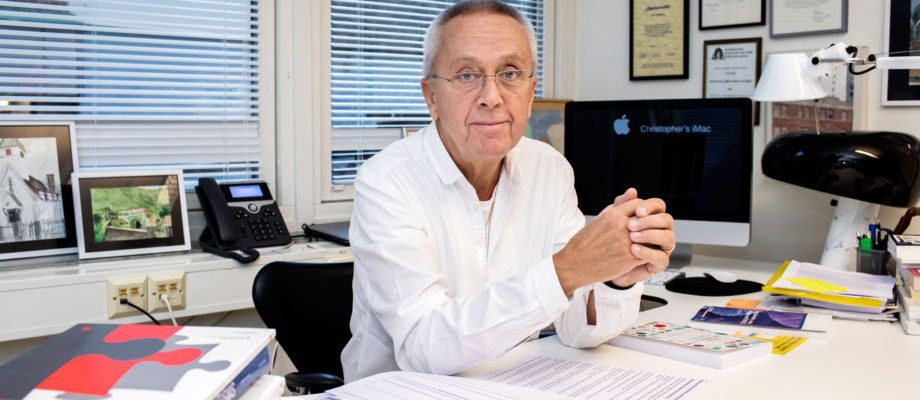GRANTS. The year’s call for proposals for ALF project funding has now been completed, and a total of nearly SEK 200 million has been allocated to the 255 applications ranked highest by the assessment groups. Two of the largest grant recipients are Christopher Gillberg and Ann Hellström, who are each receiving SEK six million over three years.
For both Christopher Gillberg and Ann Hellström, the ALF funding is very important to their ability to conduct their clinical research projects.
In the assessment, the applications were scored and ranked in descending order. The application that received the highest score, 36.5 out of 40, was Christopher Gillberg’s.

“What pleased me most was that we not only received the highest award, but also received the highest score in all of Gothenburg! I would like to believe that it is the breadth and depth of our research, combined with the very significant clinical connection, that caused the assessors to judge us so positively,” says Christopher, who is the nestor in the various substudies of the project and is also a clinical supervisor who himself examines study participants for some of the subprojects.
“What could be most important of all is gaining an even better understanding of why things go well for some people with autism, while others have severe developmental deviations, in other words what specific factors can be considered ‘salutogenic’ or ‘resilience factors’, so we can hopefully suggest better adaptations and treatment efforts than currently available. Our studies have already made strong contributions towards this understanding and have led to implementation of, among other things, screening and habilitation initiatives both nationally and internationally. But, as always, there is still a lot left to do.”
Saves premature children’s sight
Ann Hellström is a senior physician at the pediatric eye clinic of Sahlgrenska University Hospital and a professor of pediatric ophthalmology with a focus on growth factors. Her research focuses on the serious vascular disease retinopathy of prematurity (ROP), which can affect premature children and can lead to blindness. Together with her colleagues, she has previously shown that it is premature children with low levels of the growth factor IGF-I who develop ROP.
According to Ann Hellström, more evidence is needed to determine the best course of treatment for the premature children when they are newborns.
“We need to know what is optimal when it comes to nutrition and oxygen levels as well as other factors that govern growth and development. It’s not just about preventing ROP, but also other health problems that are strongly dependent on factors linked to ROP, like poor growth or reduced cognition later in life.”

Identify at-risk children
Ann Hellström’s group previously developed a program called WINROP, which follows the weight gain of premature children week by week and alerts about an increased risk of serious ROP in the event of deviation.
“WINROP has attracted great interest and is currently used around the world. We now want to developed a more advanced monitoring system, where we combine several biomarkers that we have seen differ significantly during different stages of the child’s disease course. The goal is for us to identify what markers can be monitored – in practical terms – at the neonatal ward and best identify at-risk children,” says Ann Hellström.
The project Ann is now receiving ALF funding for has a strong clinical foundation.
“It will be exciting to carry out final analyses of our clinical intervention studies to see whether we are able to reduce the morbidity of premature children. If our interventions prove to reduce the morbidity of the children, we will be able to translate the research into a new treatment relatively quickly,” says Ann.
Clearing the way for tomorrow’s researchers
Internationally, Sweden is known for fine registry studies on ROP and for research on prevention and risk factors. One of Ann Hellström’s current challenges is plans for a national study aimed at improving opportunities for tomorrow’s researchers in pediatric ophthalmology.
“We want to be able to use today’s IT structures for modern data collection and storage of research data in order to provide free access to the material for the researchers who come after us.”
67 percent granted
A total of 379 applications were submitted. Of these, 255 were granted funding, which gives a grant rate of about 67 percent. All applications were assessed and scored by four assessment groups according to defined criteria. The application that received the highest score, 36.5 out of 40, was Christopher Gillberg’s.
More information about the delegation decision and the entire list of everyone receiving ALF funding in the largest call for proposals of the year can be found here: https://gubox.box.com/s/2nxecqz1ylfh8alp9kyx7li9zlilsqzw
TEXT: ELIN LINDSTRÖM CLAESSEN











